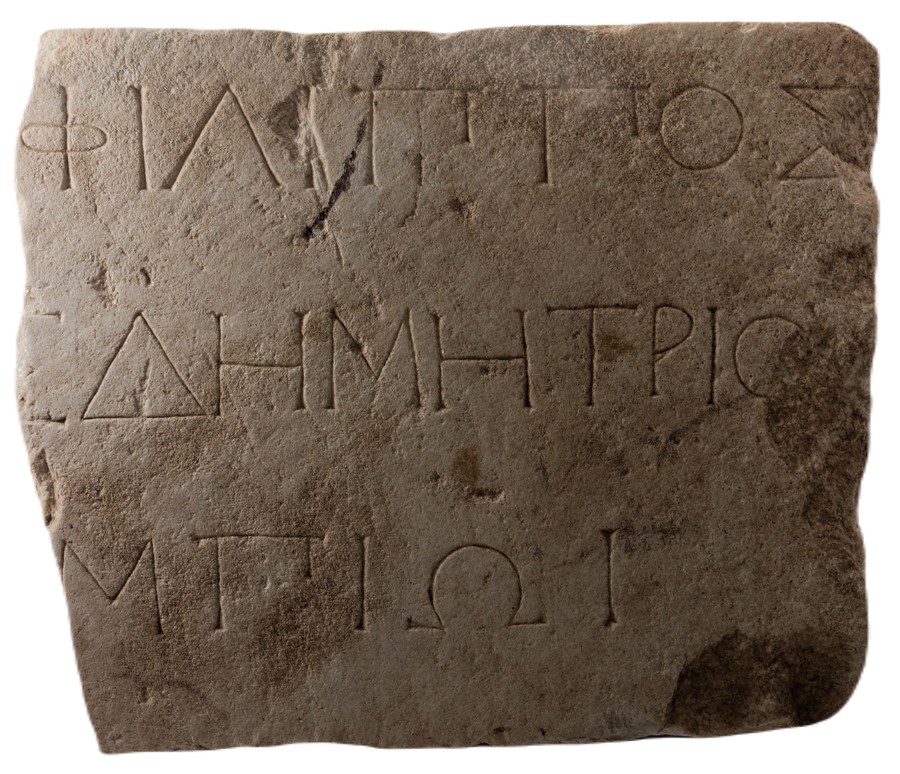According to Polybius’ description, when the Aetolian general Scopas invaded Dion in 219 B.C., which its inhabitants had already abandoned, he razed the walls, the houses and the city’s gymnasium to the ground. At the same time, he burned down the porticoes around the temple of Zeus Olympios, destroyed the votive offerings that adorned the sanctuary and overturned all the εἰκόνες, among them the statues of the kings (Polybius IV.62.2). The description of the destruction is similar to that inflicted by the same general on another religious centre, the sanctuary at Dodona, but also on that inflicted by the Macedonians in retaliation at Thermon, the political and religious centre of the Aetolians. The information of the historian from Megalopolis about the existence of statues of Macedonian kings and royal votive offerings in the sanctuary of Zeus Olympios corresponds to the discoveries in Dion. From such a royal offering comes the pedestal bearing the inscription Βασιλεὺς Μακεδόν[ων] | Κάσσανδρος Ἀντιπ[άτρου] | Διὶ Ὀλυμπίωι [“The king of the Macedonians, Kassandros, son of Antipater (decicated) to Zeus Olympios”]. Other votive offerings certainly fell victim to the destructive frenzy of the Aetolians, so that no traces of them have survived.
The recent excavations in Dion revealed another royal offering. It is the right part of a rectangular marble slab, which was used as a building material in a house of late antiquity (Fig. 1) . The following inscription is engraved on the front of the slab:
[Βασιλεὺς] Φίλιππος
[βασιλέω]ς̣ Δημητρίου̣
[Διὶ Ὀλυ]μπίωι
Transl.: ‘King Philip, son of King Demetrius, (dedicated) to Zeus Olympios’.

As the text of the inscription clearly indicates, the monument is a dedication from King Philip V of Macedonia to Zeus Olympios. The simple reference to the name of the king, without indication of the year of his reign, allows only a general dating to his reign, i.e. between 221 and 179 B.C. The king’s relationship to the religious centre of the Macedonians is well documented by other inscriptions, although dedications by Philip V are also known from other Macedonian cities. The form of the dedicated monument cannot be determined. It is most likely that the inscribed slab was originally integrated into the pedestal of votive offering. If the monument does indeed date from before 219 B.C., the identification of the monument as that of the Macedonian king was enough to provoke the reaction of the Aetolians and, consequently, its destruction.
Bibliography:
Pingiatoglou, S., Vasteli, K., Pavlopoulou, E., Tsiafis, D., 2015. «… ἐν Δίῳ τῷ Πιερικῷ παρὰ χεῦμα Βαφύρα»: 2010-2011», AEMTh 25 (2011) [2015] 131-140.

